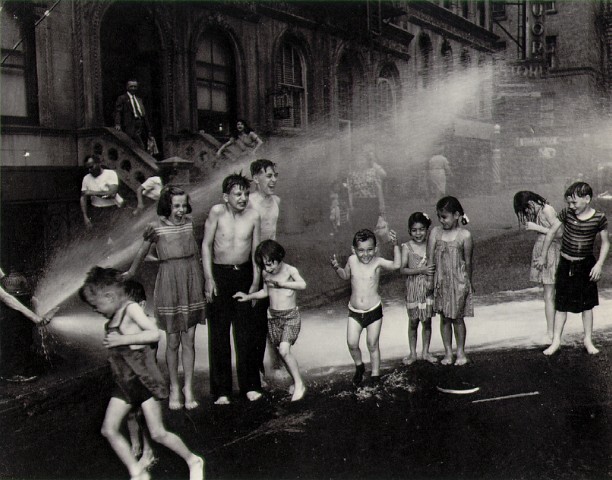
Weegee (Arthur Fellig), "Summer, Lower East Side" (1937)
Maybe the longer you're here the more likely New York will feel like a small town, but normally that means small in physical scale. What about the dimension of time? When we find really long-term survivors in our midst, our assumptions about the city's evanescent joys and sorrows fly out the window, and the years themselves are abreviated.
Linda Wolfe recently tripped over her own and her city's histories on a recent afternoon when she returned for the first time in 50 years to two old houses on East Broadway, nos. 185 and 187,* where she had lived one summer between college semesters.
She admits that she knew nothing of the nineteenth-century history of the neighborhood when she was there in 1953, although that of the 20th century was very much present.
After all, The Jewish Daily Forward building, with its columns, crowning clock and bas reliefs of the heroes of European socialism, was three doors over. The Educational Alliance, where assimilated uptown Jews once tutored their rough-edged newcomer cousins in English and social graces, was just across the near corner. The Garden Cafeteria, where aging Trotskyists and Stalinists sat chain-smoking and arguing the future, was on the far corner. These famed institutions were all still functioning. I had moved into the bleachers of history.What she found when she returned put the last two centuries in a perspective denied most New Yorkers.
____________________
*
In Caleb Carr's "The Alienist" the title character operates an institute for children at 185-187 East Broadway. I wonder if Ms. Wolfe knows about this shared reference.
How did YOU remember that detail about "The Alienist"? Elizabeth
I didn't.
Barry has read it, but it's still on my stack. I actually found the item while Googling, trying to find an old image of 185-187. Love Google!